An advertisement by the government of India on Sunday announced 10 positions at the joint secretary level for ‘talented and motivated’ professionals. These positions will be lateral inductions into senior bureaucracy as opposed to recruitments through the UPSC exam route.
ThePrint asks: Lateral entry at joint secretary level positions: reform or politically motivated?
No way India can continue to govern itself using 20th century civil service model
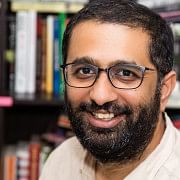
Nitin Pai
Director, Takshashila Institution
I have spent the past decade arguing that “there is no way India can continue to govern itself using the 20th century civil service model”, and that it’s only a matter of how soon the government will open the civil service to professionals at different levels. That’s because most politicians have realised that they simply cannot deliver on the aspirations of the people without bringing in professional experts into the government.
Lateral entry at the joint secretary level is appropriate because it requires candidates to have both expertise and track record, instead of mere potential that can be observed at entry levels.
We can expect three kinds of objections to this move. First, from within the civil services, we can expect an immune reaction to a foreign body. Second, cynics will allege that the positions will be given to people who share political and ideological loyalty to the current government. Finally, there will be concerns over how such hiring will be compatible with goals of equity and social justice.
Let’s consider each in turn. We as citizens need not be too impressed by politics of bureaucracy, but need to be aware that individuals hired through such a process will face problems adjusting to working in the government. This is not to say that every IAS officer is ill-disposed towards lateral entry, and there will be some who will have a positive outlook towards the reform.
Will lateral entrants be more political and ideological than those produced by the current, ostensibly apolitical system? Perhaps yes, although it takes a lot of naïveté to believe our civil servants are apolitical and act in a non-partisan manner. The only defence against partisanship is public scrutiny, and that needs to be scaled up anyway.
Will lateral entry skirt around reservations? To the extent that jobs in the civil service have to comply with the constitutional requirements of social justice, lateral entry cannot be exempt. This does not necessarily mean that every set of positions open to lateral entry need to adhere to a fixed formula for reservations.
No room for apprehension if selection of officers is transparent, objective & professional
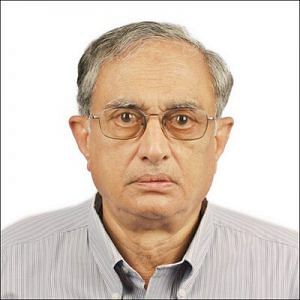
E.A.S. Sarma
Former IAS Officer
It is not the first time that the central government has proposed lateral recruitment to senior positions in the government. During the 70s, experts from the public and the private sectors were inducted as secretaries to the government. Similarly, experts from outside were recruited as consultants in the erstwhile Planning Commission. Many of them contributed immensely towards bringing in new ideas into the domain of planning and policy-making. One should not, therefore, question the concept of lateral recruitment per se.
While those who belong to the formal echelons of the civil services maintain the much-needed thread of continuity in governance, a highly structured civil service format, however, has its shortcomings.
The generalist civil servants, transferred from one department to another, may not always be best-suited to hold positions of authority in sectors that require technical knowledge. Even in departments such as railways, postal services, customs, among others, induction of outside experts on a contractual basis may add value to governance.
As long as the process of selection of candidates remains transparent, objective and professional, there will be no room for any apprehension.
However, the manner in which the present NDA government has dealt with appointment of senior members of the judiciary, or how it is appointing party spokespersons as government nominees on PSU boards, or its proposal to tinker with inter-service allotment of officers belonging to the All-India Services recruited by UPSC, will raise legitimate concerns about the motives underlying the present proposal.
The present government will, therefore, have to go one extra step to gain public confidence in what it is doing.
10 recruits will neither dent nor make earth-shaking difference to present system
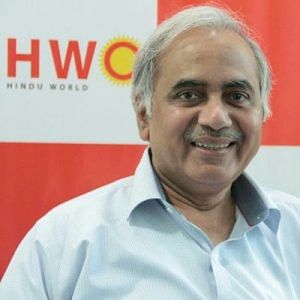
Seshadri Chari
Former editor, ORGANISER
An innocuous-looking advertisement by the Department of Personnel and Training, calling for applications from talented and motivated Indian nationals willing to contribute towards nation building for 10 (only?) positions at the joint secretary level, has raised the hackles of the 160-year-old civil services, called the IAS since the last 68 years.
The 5,000-odd ‘steel frames of India’ is still far below the number required to administer a country of India’s size and complexities. So, if the government plans to draw expertise directly, there should ideally be no rancour among the serving IAS cadre. It is nobody’s argument to replace the IAS with a new system. Ten new recruits are not going to make any dent in the present system, nor are they likely to make any major earth-shaking difference. The departments announced in the advertisement actually need many more experts at various levels.
During her reign, Indira Gandhi had appointed a technocrat as secretary to the ministry of industry. She had suggested posting non-IFS ambassadors in countries with large PIO presence for building better relations, but the IFS lobby reportedly scuttled the idea.
Governments elsewhere rope in the services of experts, even from industry and think tanks, regularly to assist in policy formulation and programme implementation. Nevertheless, it may not be easy for these new recruits to adjust to the ‘traditional’ work culture of the government. Government should ensure an enabling work atmosphere just as it proposes to limit their tenure co-terminus with the government. To be fair, the IAS cadre also needs freedom from political intervention for a level-playing field.
UPSC should be consulted on constitutional & legal requirements for such appointments
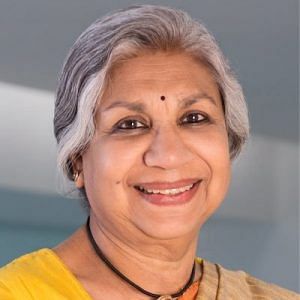
Shailaja Chandra
Former IAS Officer
A recent newspaper advertisement seeks applications for 10 positions at the level of joint secretary in the central government – not as consultants but as public servants. Such appointments are stated to be initially for three years and extendable to five.
There is no need to suspect foul play or politicisation because we have umpteen examples of laterally inducted professionals. V. Krishnamurthy, Mantosh Sondhi, D.V. Kapur, Montek Singh Ahluwalia, Deepak Nayyar and R.V. Shahi were lateral inductees. The difference perhaps lay in their earlier appointments in bodies such as the NTPC, the BHEL, the Indian Railways and the Steel Authority of India. Else, they came via the Union Public Service Commission (UPSC).
Lateral induction of a non- service professional requires that once a position is created, rules specifying eligibility conditions, qualifications and experience are notified with the approval of the UPSC, and the selection is made by the commission. This is a constitutional requirement because only the UPSC has the mandate to select public servants who are inducted into positions under the central government.
While any number of consultants, advisers and officers on special duty can be selected and assigned jobs by ministries and departments, recruitment to positions carrying the responsibilities of public servants are different. An officer who is selected to serve the central or state government is appointed by the President or the Governor of a state. He cannot be anointed as a public servant unless the due process is followed.
One hopes that the constitutional and legal requirements set out for making such appointments have been framed in consultation with the UPSC. This would preclude the possibility of raising unnecessary hopes and aspirations, and the probability of such appointments being challenged in the court.
Lateral recruits will get ignored in the power structures in ministries
 Sanjay Dixit
Sanjay Dixit
Serving IAS cadre
The idea of a lateral entry at the joint secretary level is something I have advocated for a number of years. I have advocated abolition of the present flawed system of empanelment, and suggested a broad-based examination. This exam can be conducted by the UPSC and anyone, from the AIS to the CCS officers, who has spent certain number of years in the service will be eligible to compete. This exam should also recruit officers for the much-deferred Indian judicial service as well.
This would be a merit-based, tough as nails, objective and unbiased system to get fresh ideas from those who have kept pace with the latest. It could even be broadened further to include people from the public sector and the private sector as well.
The way it seems to be done now, it is going to be a non-starter.
First, a three-year contractual joint secretary will carry no gravitas in the government system. Second, the criteria and method of selection are both opaque. Third, when Russi Mody could not shake the behemoth called Indian bureaucracy, what would you expect 10 poor joint secretaries to shake? They are just going to be ignored by the power structures in the ministry. The IAS, the IPS and other central services’ officers are not going to take these officers seriously.
Don’t we have a plethora of officers on special duty (OSDs) in the ministries – many of them at joint secretary ranks. It should not be difficult to get an interview from them and know first-hand on how much they are able to contribute. Before they learn to navigate through the labyrinths of bureaucratese, their contract would be over.
Watch out for undersecretaries whispering – which JS, sir? Regular wale ya contract wale!
Lateral entry will open bureaucracy to wider pool of talent
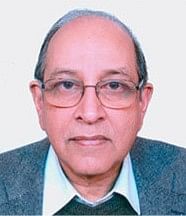 Vijay Singh
Vijay Singh
Former defence secretary and former member, UPSC
I would say that the latest announcement of lateral entry in the bureaucracy is neither a reform nor politically motivated. Even in the past, such practices have been prevalent. It is only now that the government is advertising it.
In fact, figures like Manmohan Singh, Mantosh Sondhi, Lavraj Kumar were experts in their respective fields when they entered the bureaucracy. And this practice has been present in ministries such as finance, agriculture, commerce, among others. Many ambassadors are often appointed from outside the services, and they bring in a lot of expertise from their individual fields. This opens the bureaucracy to a wider pool of talent.
Currently, many experts are being inducted at the joint secretary level through such advertisements. The number announced by the government is hardly a matter for great concern. It is a very small number, which does not affect the composition of the bureaucracy.
The real test of the government would be the manner in which they are recruited into the system. So far, all the positions have been filled after the candidates have qualified the UPSC examination. With this new system in place, it will be interesting to see the process followed by the new appointments, and whether they can prevent its misuse.
At this point, I wouldn’t dwell much into the timing of this advertisement that may have been proposed much earlier but had to go through a gestation period, which is quite normal for any government.
Government must not make the ‘steel frame’ feel insecure
 Maneesh Chhibber
Maneesh Chhibber
Editor (Investigations and Special Projects)
After decades of dilly-dallying, the Centre has finally decided to formally open up the bureaucracy to experts from various sectors. While experts have in the past been appointed to important positions in the government, such appointments have been very few. But, it is an idea whose time has come.
One reason for the same was the resistance that came from within the IAS-controlled bureaucratic set-up in the government, which had grave misgivings, most of them overblown and baseless, to any such move.
Now that the government has finally taken the plunge, a lot will depend on whether the move translates into a game-changer or ends up as yet another example of a good plan gone awry.
To begin with, it will require some extra effort, particularly by the political executive, to ensure that the decision doesn’t end up becoming a disruptive move. For when it wants, India’s bureaucracy, while much-maligned, knows how to produce results quickly. At the same time, it can also effectively scuttle any scheme if it feels threatened.
The ‘steel-frame’, therefore, should not feel insecure.
The government will have to ensure that the 10 experts who are selected as joint secretaries are selected through a rigorous, transparent process. The words in the “detailed advertisement” put up by the government – the shortlisted candidates will be called for a personal interaction with the selection committee – don’t offer much clarity on who constitutes members of this committee.
Since every citizen of India with a graduate degree from a “recognised university/institute” above the age of 40 years is eligible to apply for the 10 posts, the government can expect to receive thousands, if not lakhs, of applications for the 10 posts.
Ensuring that only the best get to appear before the selection committee for the final interview will take some doing.
Since everything that the Narendra Modi government does invariably attracts the charge that it is bringing in the RSS functionaries into the government, it will have to take special steps to ensure that this doesn’t happen here.
Finally, it will also have to guard against the possibilities of some corporates or influence-peddlers trying to get a toehold in the government by getting their own associates selected to these posts. Those who understand the ways of the government would know how much influence a joint secretary in a ministry like finance can wield.
Compiled by Kritika Banerjee and Sankalita Dey, senior assistant editor and journalist at ThePrint


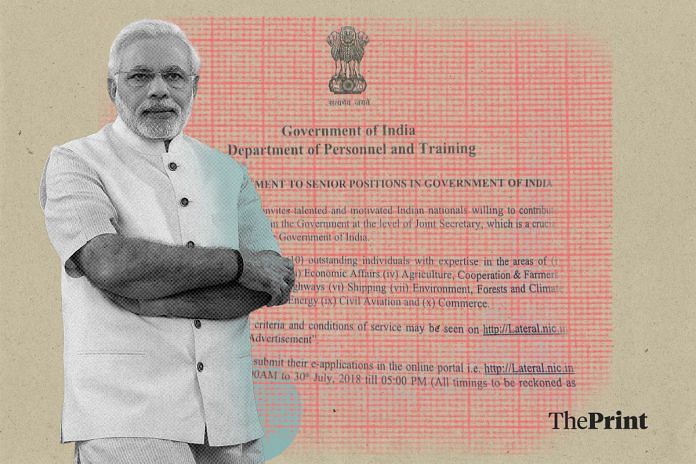

Whatever maybe the reasons for opening the Government to Public to directly at the level of Joint Secretary to start with, I welcome it. The Opposition may cry that the ruling government may have hidden agenda behind it. But, I welcome it, because, at last the Government has realised that Experts are available outside the IAS pool also. It was neglected for the past 70 years which has costed the country very dearly.
Can nirav modi become JS
There has been traditional partnership between the permanent civil service and elected government, as custodians of public resources and governance.
That equilibrium will now be disturbed.Difference between contract employees and regular Government servants is that latter get benefits as well as responsibilities of Article 309 of Constitution. No doubt some extremely talented individuals could be applying now for lateral entry. But, that may not ensure team spirit in civil service as a whole, considering the fact that this group would be perceived by the rest as mercenaries with no long term interests. Finally, in terms of protecting the role of Institutions, the lateral entry group would be less equipped.